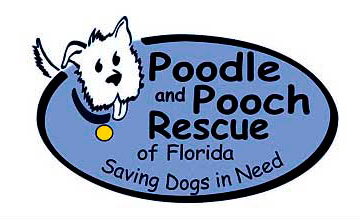
Have you ever felt the push-pull between wanting to give your pup the BEST nutrition possible but not “breaking the bank” while doing it?
It can be an overwhelming task. Especially if you’re standing in the dog food aisle, mesmerized by attractive packaging, and feeling a bit hungry yourself.
But it IS a decision that can impact your dog’s health significantly. And just like your own nutritional choices, there are always small incremental ways to improve your selection—regardless of your budget restraints.
Here are five quick questions to help you filter through the hundreds of options.
1. Does it Have Quality Ingredients?
For the unaccustomed eye, some ingredient lists (on the back of dog food bags) might make you wish you had paid more attention in chemistry class.
And that is, in fact, your first red flag.
Quality ingredients WILL be words you recognize and understand. They won’t leave any room for guessing. For example, if salmon is the first word on the list, you know that your dog will be getting the benefits of this omega-rich fish. However, meat byproduct leaves you wondering what type of meat is included, and what exactly, “byproduct” refers to.
If the list has words that aren’t specific or lack clarity, they may be “hiding” a less-than-ideal ingredient.
Pro-Tip: Avoid brands that use BHT and BHA as preservatives. The World Health Organization has named these as suspicious of being cancer-causing.
Instead, opt for brands that use forms of natural preservatives such as tocopherols or ascorbates. (I know, big scientific words again, but only two to remember.)
2. What’s the Order of the Ingredients?
Saving the best for last is NOT the way an ingredient label reads. It’s actually the opposite—they are written in order of the ingredient amount.
Your pooch is a carnivore and needs the first few ingredients to be animal proteins. Dog food companies that are making cheap dog food will usually have fillers such as corn, soybean meal, or gluten meal as some of the first few ingredients. These, unfortunately, don’t offer your “baby” any real nutritional value.

Expect that a quality food label will include proteins, carbs, fats, natural fiber, vitamins & minerals. Incidentally, they should line up in that order.
Pro-Tip: A premium product will have identifiable meats as the first few ingredients. You can then expect to see some grains and vegetables, which supply a good energy source, fiber, and satiation. Healthy fats are almost as essential as protein for their ability to regulate temperature and control inflammation. Finally, the end of the list will contain crucial vitamins and minerals that set your dog up for success.
3. What Season of Life is Your Furbaby In?

Many dog food companies address the differing needs of puppies, adult dogs, and seniors with special formulations. But as with most things, it’s important to understand the “why” behind purchasing according to your pup’s stage of life.
First and foremost, the energy requirements of a growing puppy are going to differ from your more sedate senior canine.
Not only is it crucial to give a puppy all he needs (in the way of proteins, fats, vitamins, and minerals) to develop strong bones and body systems, but he will also naturally burn through more calories with his puppy playfulness.
Your mature or senior dog may need to “watch” her calories since she’s sleeping much of the day. And gaining weight will put her at risk for health and joint issues. Additionally, aging immune systems need the support of essential antioxidants.
Pro-Tip: Seniors with lost teeth may find it difficult to eat dry kibble so choosing a nutritionally balanced wet food might become necessary. Older dogs also require natural fiber to keep their digestive system working efficiently.
If you happen to have a puppy and a senior dog and have difficulty keeping the food separate, you might consider a “multi-stage” food. But be aware that these may include some compromises to make them work for both ends of the spectrum.
4. Do You Have a Small, Medium, or Large Pupper?
Your dog’s full-grown breed size should also direct some of your nutritional considerations.
This is particularly true in the puppy stage because a puppy that will grow to be a 150-lb mastiff mix will have different needs than a toy poodle mix. And that growth will happen very quickly, so you have a small window of time to provide those nutrients.
Pro-Tip: Extra things like chondroitin, glucosamine, and calcium are critical for breeds with extra weight to bear on their joints. Special formulations are available for toy breeds and very large breeds, giving your “baby” precisely what they need to support their specific growth and development.
5. Are You Addressing Special Needs?
Allergies, deficiencies, and tendencies—oh my! Your fur friend relies on you to consider these things when feeding them every day.

Whether you’re dealing with a pooch that tends to gain weight quickly, itches feverishly, struggles with digestive issues, or is just plain finicky you may have to rely on the expertise of your vet to navigate food options.
Patience will come in handy as you may have to experiment a bit until you find the right solution.
Pro-Tip: Certain foods can cause allergic reactions in dogs. Some of these are chicken, soy, corn, milk, beef, and eggs.
PPR’s Go-To Brands
At Poodle and Pooch Rescue, we recognize that each pup has unique personalities, charms, and dietary needs. We’ve found that many of our rescues have done very well on the brands we share on our Amazon Wish List.
Final Pro-Tips? We’ve got three!
Understand that your pup’s nutritional needs are in your hands.
Finding a balance between best choice and sustainable cost is achievable with a little bit of research.
What your pooch eats is a significant factor in their quality of life.
